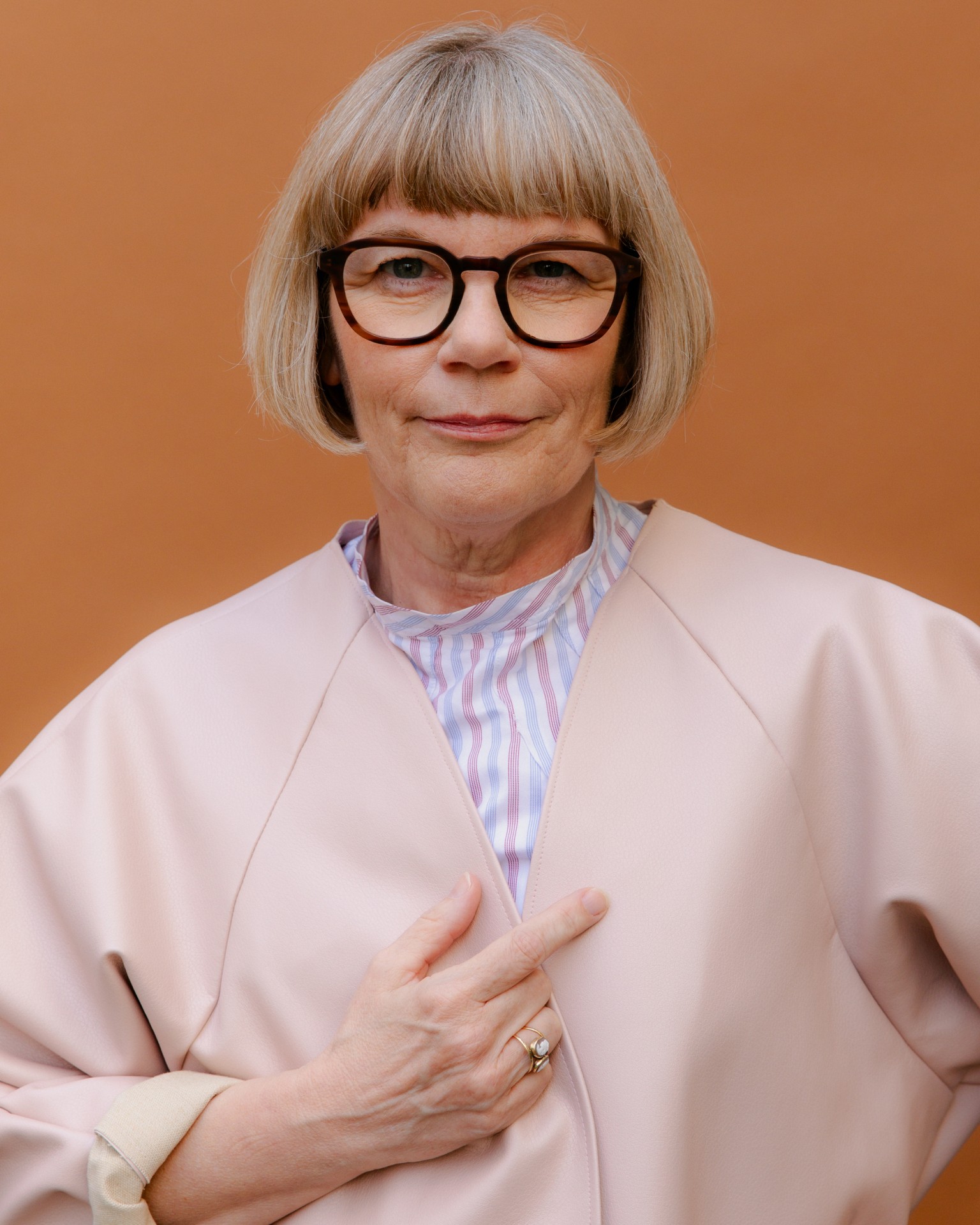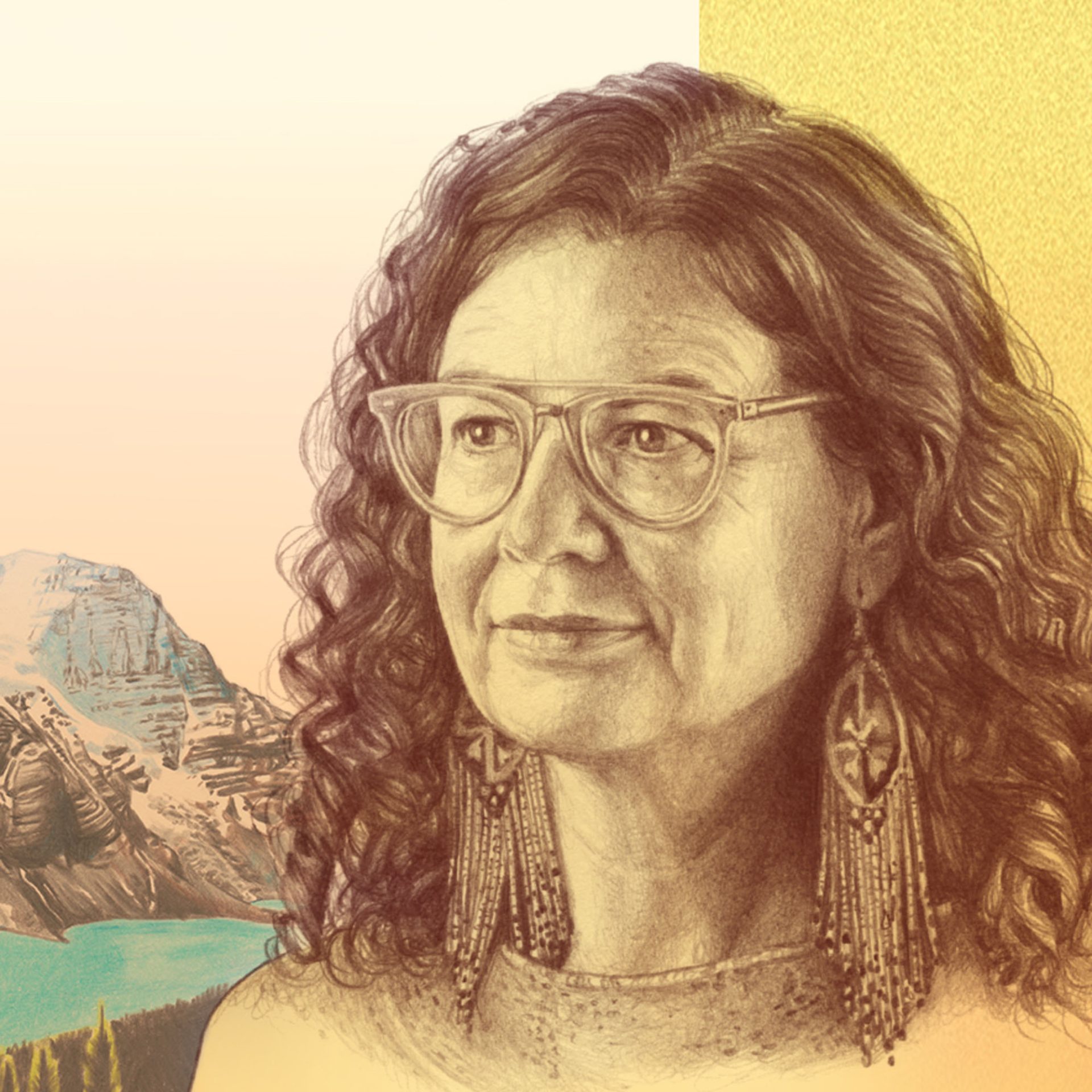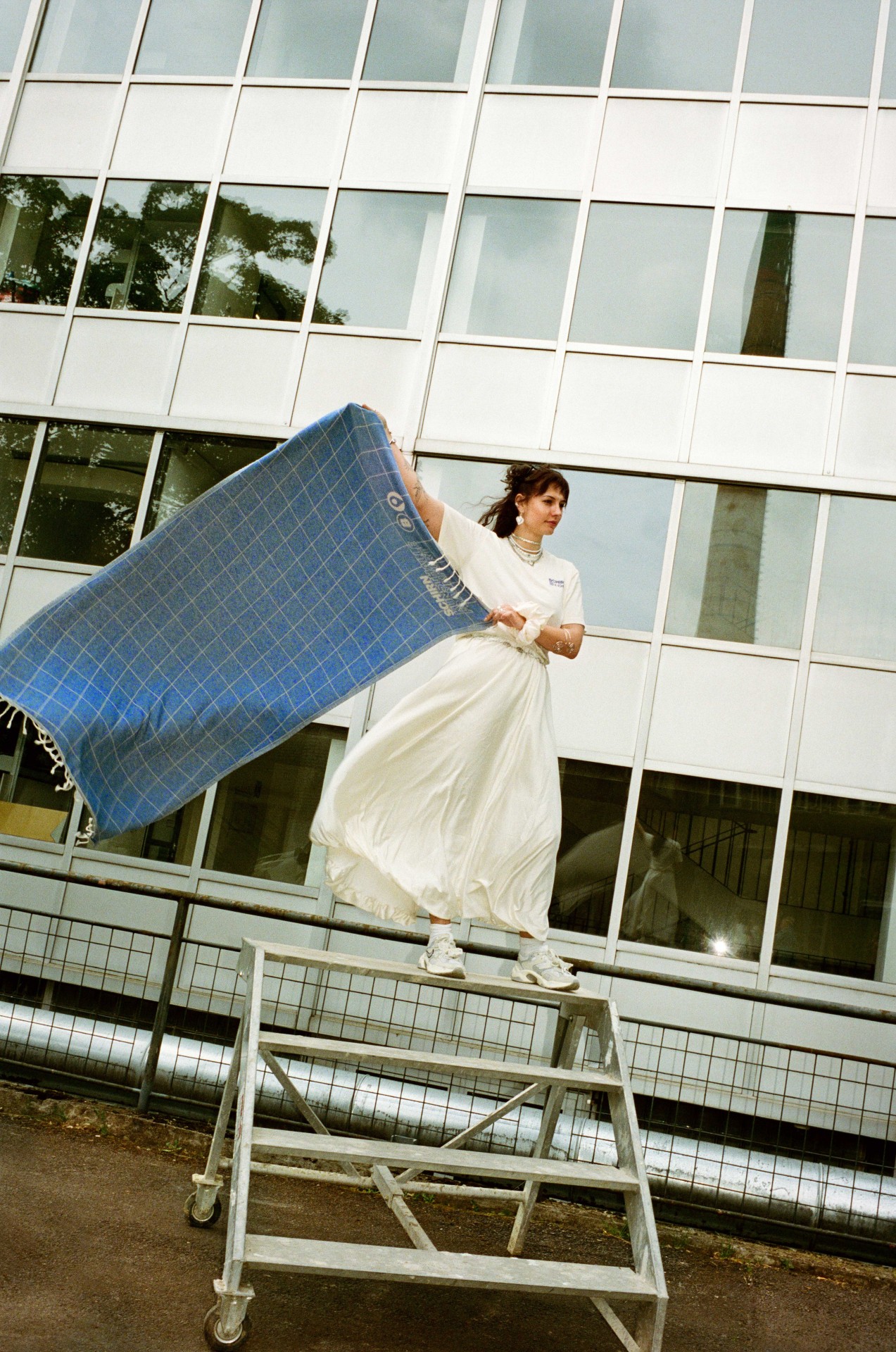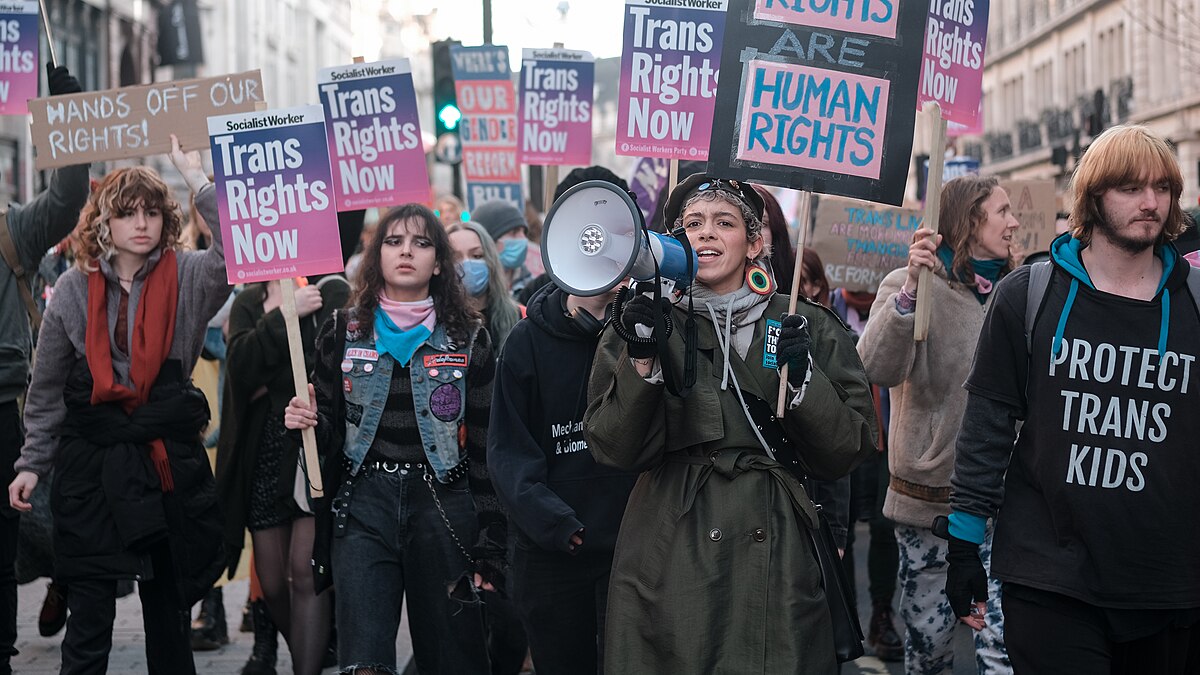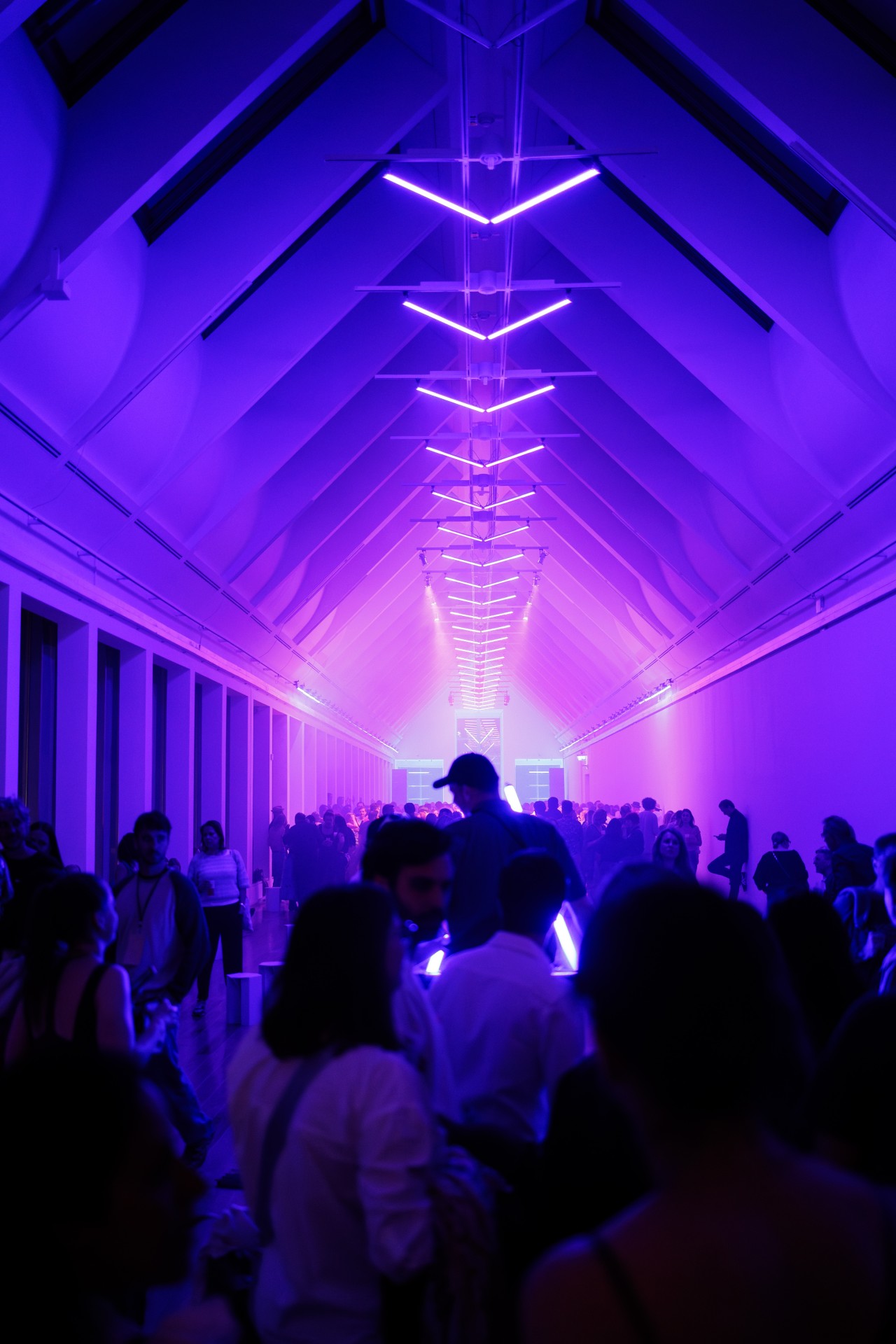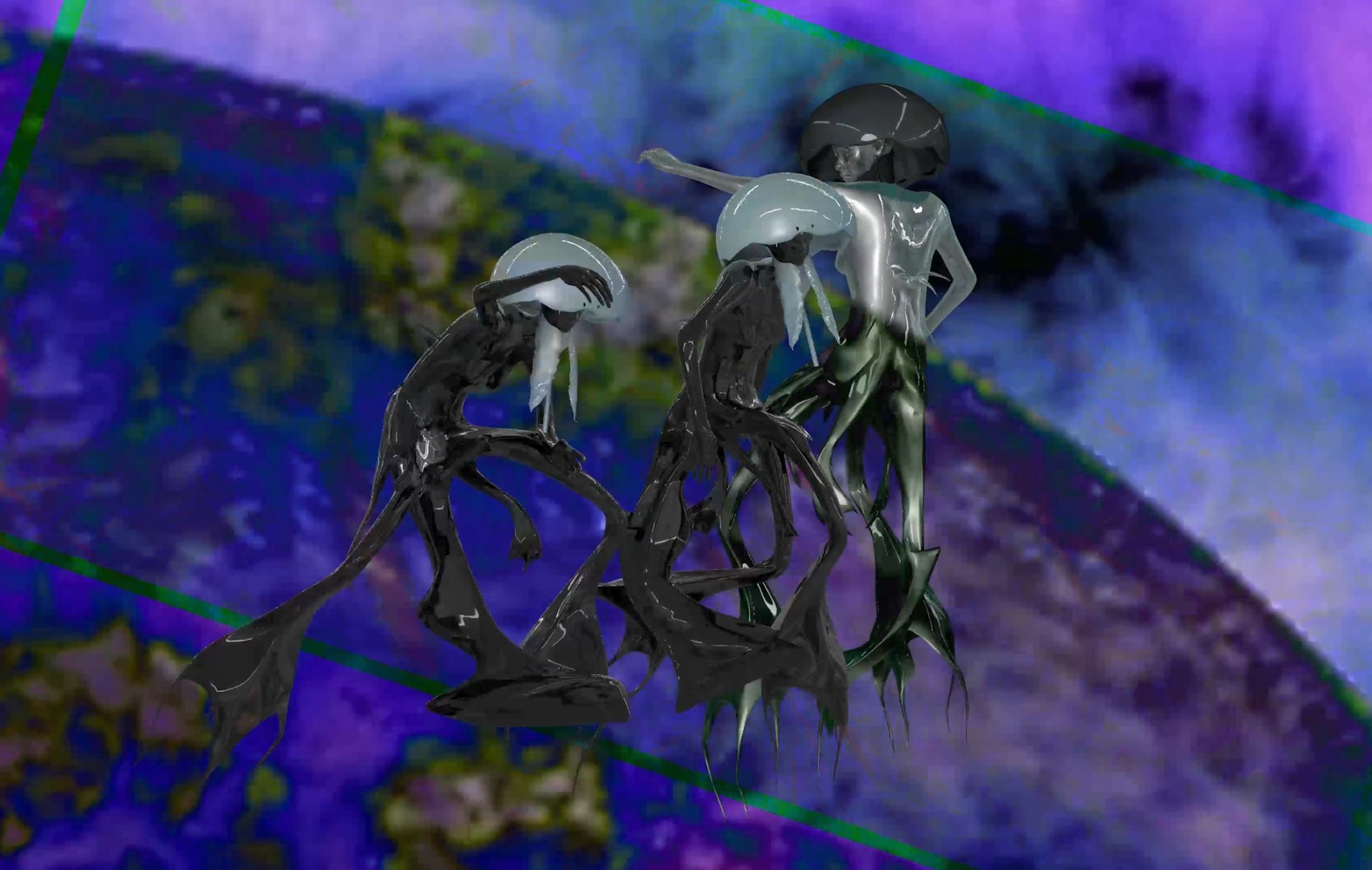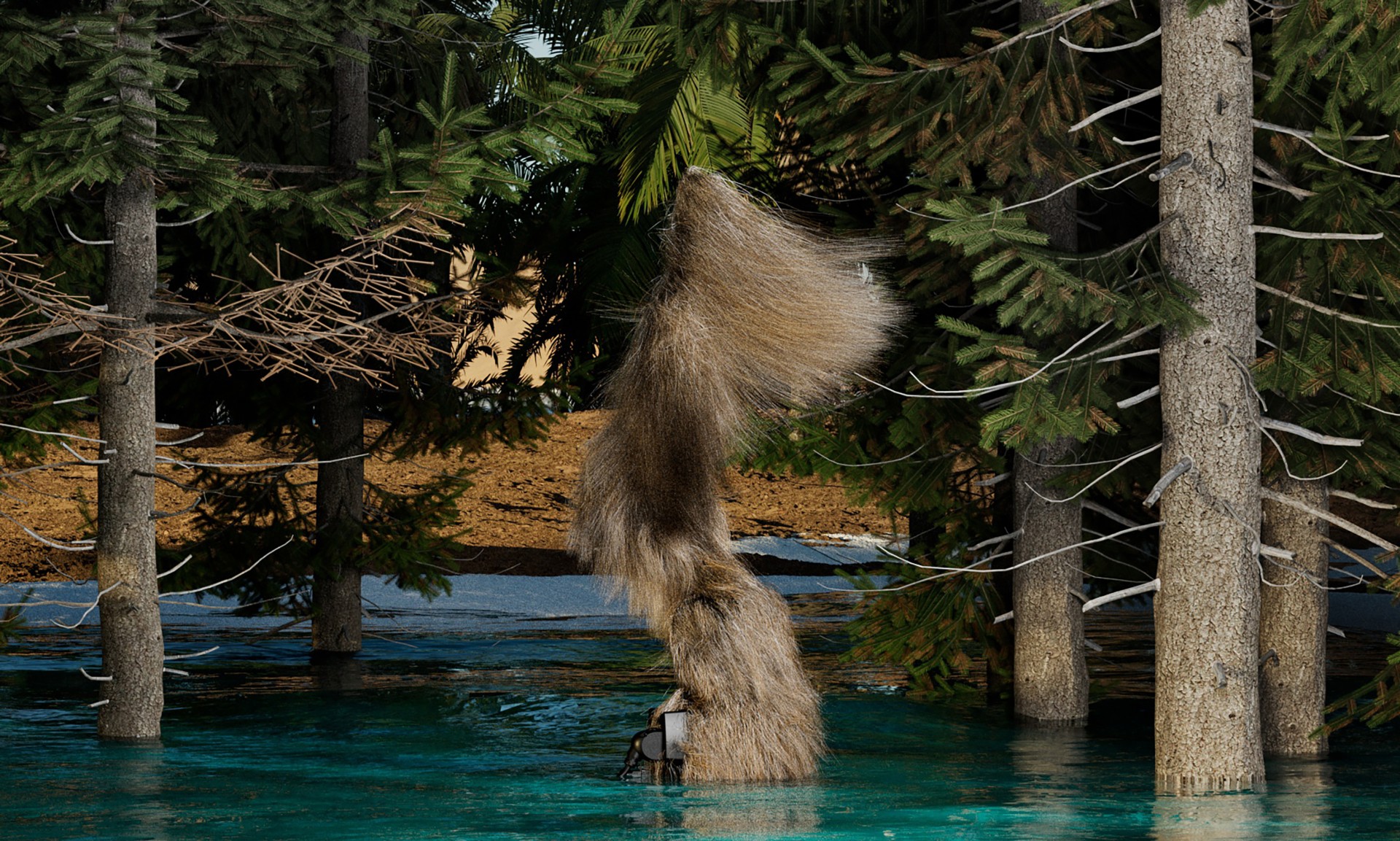Critical land.
The myth of untouched nature
03/07/2021
26 min reading time
An interview with Lakota-Scottish art historian Carmen Robertson on Land vs Landscape. The first episode of our new podcast series with Indigenous perspectives on art, nature, decolonization and climate change.
Transcript
Sylvia Cunningham: Welcome to “Critical land”. I’m your host, Sylvia Cunningham.This is the first episode of a new English-language podcast from the Schirn Kunsthalle, debuting alongside its latest exhibition, “Magnetic North: Imagining Canada in Painting 1910-1940.” This exhibition, co-organized by the Art Gallery of Ontario and the National Gallery of Canada, examines modern Canadian landscape painting from a contemporary standpoint. “Magnetic North” comprises 90 paintings and 40 sketches from the Group of Seven, a collective formed in 1920. It also features works from Algonquin-French artist Caroline Monnet and Anishinaabe filmmaker Lisa Jackson.In this podcast series, “Critical land”, we’ll draw from some of the themes in “Magnetic North” to go beyond what is displayed on the gallery walls. Through interviews with Indigenous artists, activists and scholars, we’ll connect the exhibition to art and environmental movements going on today. In this episode, you’ll hear from a Lakota-Scottish professor in Canada whose research and teaching focuses on contemporary Indigenous art history.You’ll also hear from the curator of “Magnetic North” about the challenges of presenting the Group of Seven to German and European audiences for the first time. So that is our starting point today. The Group of Seven. Picture this. Vast, rugged scenery, stretching on for miles. A single tree, standing steadfast in the cold and wind, despite all odds. Seemingly untouched wilderness, as far as the eye can see. This is Canada in the early to mid 1900s, through the eyes and brushstrokes of seven painters. More specifically, a collective of white, male painters who called themselves the Group of Seven. Their motto? “Less of a studio, more of a forest.”Here’s Martina Weinhart, curator at the Schirn Kunsthalle in Frankfurt.
Martina Weinhart: They camped, they fished, they were portaging with their canoes over the hills and stayed outside. They really wanted to be these “tough guys.”
Sylvia Cunningham: Weinhart says this group of painters did not want to be the kind of “intellectuals” who met for drinks and socialized in the city. The Group of Seven wanted to make art that was different from the art in Europe. So did they succeed? Well, that is complicated.
Martina Weinhart: They thought of themselves of Candian artists but half of them were from England and a lot of them were trained in Europe, visited Paris, Berlin even. They were very well-educated in European art history. If you look at their pictures, there are certain echoes of German romanticism, Caspar David Friedrich for instance, or you find certain relations to French art and of course the Scandinavian arts, so these were the roots their art was based in.
Sylvia Cunningham: The exhibition at the Schirn marks the first time the Group of Seven’s works are being shown in Germany.
Martina Weinhart: In Canada they are national treasures. They are icons. Every child knows them. In school, they learn about Picasso and they learn about the Group of Seven.
Sylvia Cunningham: That is not the case in Europe, Weinhart says, where these painters are relatively unknown. But presenting the collective to a German audience for the first time is a tricky task. As always, context is critical.
Martina Weinhart: All these paintings are very atmospheric, very beautiful. But they are empty. There are no people, and you find these kinds of paintings also in Europe, but in Canada, this approach gets a total different meaning because this land wasn’t empty. This was for years and years and thousands of years the land of the Indigenous people.
Sylvia Cunningham: That is one of the blind spots of the Group of Seven, and something the “Magnetic North” exhibition wrestles with. And in this podcast, “Critical land”, we will too.In today’s episode, we’re unpacking the idea of land versus landscape with Professor Carmen Robertson, a Lakota-Scottish scholar from the Qu’appelle Valley in Saskatchewan in Canada. We’ll probe the myth of untouched wilderness and talk about the process of decolonizing art. Carmen Robertson is the Tier 1 Canada Research Chair in North American Indigenous Art and Material Culture at Carleton University in Ottawa, Ontario. There she leads a large research team looking at the life and work of Anishinaabe artist Norval Morrisseau. Morrisseau was part of a collective of Indigenous artists in the 1970s. That collective was later nicknamed the “Indian Group of Seven.” Professor Robertson started off by telling me what drives her and her research.
Carmen Robertson: I’ve been teaching Indigenous art history since the early 2000s and you know I’ve always had a passion towards ensuring that Indigenous arts are better understood within the context of art history more generally and Canadian culture especially and even positioned within a global understanding so whether it’s Norval Morrisseau particularly or contemporary Indigenous arts more generally, my passion is to ensure that people understand what these amazing arts are and they’ve been so underappreciated for so long that it’s kind of exciting to see that there is change afoot.
Sylvia Cunningham: OK, so there has been change? Some movement in the past few years, would you say? Or has it even been decades?
Carmen Robertson: I wouldn’t say decades, no, definitely not. But there is substantive change that we see occurring. For example the National Gallery in Canada has really made a mandate to ensure that they exhibit contemporary Indigenous art. “Abadakone” was a very important exhibition – global Indigenous exhibition that was held in the last year there. So there is incremental change. That said there is not a real understanding necessarily of what is behind that art, so that’s still to come.
Sylvia Cunningham: So we’re going to get deeper into this in a little bit. But first, I wanted to take a step back. When did you first encounter the work of the Group of Seven?
Carmen Robertson: Well probably, I think for all Canadians, when they’re born (laughing) they just automatically know who the Group of Seven is. You know, in elementary school, it’s the only art. I grew up in a very small town in Saskatchewan and we saw almost no examples of art but somehow, I knew who the Group of Seven was. And we knew that their landscapes were iconic images of what Canada is. And yeah, so there’s always been an understanding that that was really the most important art in Canada.
Sylvia Cunningham: Having grown up in Canada, did you connect with these landscapes? Did you recognize the landscapes in the art that you were seeing?
Carmen Robertson: Well, it’s undeniable how beautiful their renderings of landscape are. But your term “landscape” is an important one. They weren’t really painting the “land” as the way I connected with land particularly. But that sense of an empty wilderness is really an iconic aspect of their painting, and I didn’t know this in elementary school, but I’ve come to know now that that’s really a colonial construction that helped Canada really go forward with their colonial project, assuming that Canada was terra nullius or an empty land and related to you know, historical issues like the “Doctrine of Discovery” that allowed European countries to feel free to colonize lands in the Americas. So that notion of a wild rugged and empty wilderness is one of the fundamental keys that has made the Group of Seven such a popular artistic “movement” in Canada, I guess you could say.
Sylvia Cunningham: So you would say that this idea and false notion, this fallacy of untouched landscape, of untouched wilderness, that that was then exported to the rest of the world as quote, “Canadian art.”
Carmen Robertson: Absolutely. And of course it was heavily influenced by what was happening in Europe. It’s not a specifically Candian vision of the land, it’s very much…you know, I think it was W.J.T. Mitchell who said way back in the ‘90s that landscape is an example of European imperialism, an artistic example of that. And I think that that really does manifest itself in the Group of Seven.
Sylvia Cunningham: So we’ve already talked a little bit about the difference between land and landscape, but can you put a finer point on the difference of those terms to you?
Carmen Robertson: Right and so I’m going to separate the way I think of those from a Lakota or an Indigenous way of knowing the land versus a eurocentric or western way of knowing the land. So landscape, you know it really is painting a possession or a thingness of what land is, whereas thinking about land through particular cultural ways of knowing, myself Lakota, but you know, Cree or Anishinaabe — we think of Morrisseau — is a relational connection to land. Land is a living kin within a larger sense of living beings, so it’s not a thing, it’s not a possession. It’s another living entity that you need to take care of and that will take care of you.
Sylvia Cunningham: Something that strikes me looking at the Group of Seven’s work is not only that it’s “untouched” and I say that with air quotes, is not just that it’s untouched, but that there’s this aloneness. This kind of doing it alone, self-actualization, self-determination. Do you feel like that’s all part of the narrative as well is that going out in nature is this solo activity?
Carmen Robertson: Solo activity and also very much a male activity I think has a resonance for sure. So it helps to reinforce, you know, patriarchal dominant views of what colonialism is about, what dominant Canada tends to be about, so yeah, absolutely there is a reinforcement of all those kinds of signifiers at play.
Sylvia Cunningham: Do you see that even then extracted to tourism, tourism literature, marketing of you know, “Discover Canada,” or something like that. I know you said you weren’t exposed to much art in your elementary school within your small community but you saw the Group of Seven’s art. So does that idea permeate at a lot of different levels?
Carmen Robertson: Absolutely. Throughout popular culture in Canada, you see these ubiquitous examples of using the land, wilderness, you know, the ruggedness of it. The opportunity to still discover the untouched aspects of Canada, and that goes through not only art of course as you say, also anything that was publicized in Canada for tourism or in the 19th century to come and homestead or to move to Canada. But also if you think of the Canadian Broadcasting Company, the CBC, from their early roots, that was a mandate, the “Hinterland Who’s Who” was this short bits that used to come on in Canada that would tell you little bits about untouched parts of Canada. The National Film Board of Canada had a similar mandate to show Canada to the world and part of showing that Canada was this really untrammeled and wild country, so it is really very much a part of Candian mythology.
Sylvia Cunningham: Do you feel like the Group of Seven accomplished the goal that they set out to accomplish? I’ve seen this term associated with the Group of Seven, that their style is “uniquely Canadian,” and again I put that in air quotes. I was wondering what that even means to be “uniquely Canadian”?
Carmen Robertson: Right, well and that’s such a complicated term because, you know, we live next to the United States which has always been such an overwhelming force for Canada, coming from an imperial relationship with Britain and the Commonwealth. So Canada has tried very hard to carve out a sense of identity and they’ve used the Group of Seven, and another art expression that has been used heavily in Canada is Inuit art as well, to promote Canada as something different. It’s easier to do with Inuit art because that’s an Indigenous art – it’s not an Indigenous art form because it’s sculpture or it’s printmaking, but it has Indigenous storytelling at its heart. Whereas Canada has claimed the landscape in particularly the kinds of landscapes that the Group of Seven did for themselves as uniquely Canadian when we know in fact that it is a uniquely European tradition.
Sylvia Cunningham: Emily Carr is one of the painters who although she wasn’t technically a member of the Group of Seven, she is closely linked to this group. And she’s differentiated not only as one of the few women who was but also because she traveled to various homes and Indigenous villages and depicted totem poles and such. How do you see her work?
Carmen Robertson: Right. Well it’s interesting because for years and years I’ve taught art history and so many students assume that Emily Carr is Indigenous because of the sorts of topics and images that she painted. It’s always a little bit surprising to me, but I know that there is this misconception because she very beautifully captures that imagery. However, she does so within a landscape tradition. She was very closely associated, especially with Lawren Harris and they wrote letters back and forth and things like that. Kristina Huneault who is an art historian in Canada decided to consider the way Emily Carr painted land versus a friend of Emily Carr, a Salish basketmaker, Sewinchelwet, who made baskets but they also had a very close friendship. And so she compared and contrasted the ways that they talk and thought about the land through their particular art forms and through their relationship. And what became very clear to her, because she was trying to struggle as a settler art historian herself, this notion of land versus landscape, and realized that for Emily Carr even though she had an espoused spirituality connected to land, she very much saw land as a thing. This thingness of land separates the Salish understanding of land as kin or relation in a very interconnected way which we see I think in the way you position yourself in a landscape as a painter, you’re not part of that and it changes that relationship. And it comes back down to epistemologies or ways of knowing that land, two different ways of knowing that land. And I think that’s a key to shifting the way people understand land versus landscape within the gallery setting.
Sylvia Cunningham: That’s so interesting to me that some of your students assume Emily Carr is an Indigenous artist and then you start to ask more questions about who she was and the time she was painting in. What are some of those questions that come out in that discussion?
Carmen Robertson: Well, for example, a lot of the paintings that she is creating are sort of vestiges of former villages on British Columbia’s west coast and that notion of not having actual participants in those paintings, not painting living villages but sort of a romanticized image of a past or the vestiges of a past really feed into a discourse about the quote unquote, “last of a dying breed.” A romantic image of a frozen-in-time space in which Indigenous peoples were very much at that time situated within, so realizing that that kind of a discourse, and a visual discourse is part of the baggage you bring to looking at that work requires you to peel back some of those layers.
Sylvia Cunningham: Maybe now is a good time before we get into Norval Morrisseau because there are so many questions that I have there. But first to talk about the different terms – about Native, Indian, Aboriginal, First Nations, Indigenous. If you could give a little guidance on the use of such terms.
Carmen Robertson: Well those terms are very politicized, they are external terms that have been imposed on Indigenous peoples. The idea of “one Indigenous perspective,” of all Indigenous peoples being a homogeneous group is pretty ridiculous. So the idea of First Nations, of Aboriginal, of Indigenous. Those are terms that are useful but they don’t particularly speak to any individual. So there’s a real push right now as part of this decolonizing effort to gain sovereignty, sovereignty over your own nation, identity, being. So if, for example, I referred to Morrisseau as Anishinaabe. At one time he was referred to as quote unquote “Indian,” another time he was referred to as “First Nation,” then he was referred to as “Aboriginal,” then Indigenous. People still call him Indigenous, also Ojibwe which is an anthropological term. But Anishinaabe, the Anishinabek Nation is really, he is a member of that Nation. And so using terms that are from a particular Nation have become far more used now in Canada and I think that’s a really good way to begin understanding the 500 Nations that were here when this country was begun to be settled.
Sylvia Cunningham: So a perfect transition to Norval Morrisseau, an Anishinaabe painter. Can you explain who he was?
Carmen Robertson: He is the first Indigenous artist in Canada who received an art exhibition in a mainstream contemporary art gallery in Toronto, Ontario in Canada in 1962. Until that time, no Indigenous artist in Canada had received an exhibition of that sort. Art was shown within museums. It tended to be known as “artifact.” So he was a real trailblazer in that way. He’s considered today to be the “Mishomis” or the “grandfather” of contemporary Indigenous art. He’s also the first Indigenous artist in Canada who has received a retrospective exhibition at the National Gallery of Canada. And that happened in 2006 at a time when the National Gallery really had only purchased one of his paintings in their history. His work was being collected at many art museums in Canada, but mostly at ethnographic museums, which is in itself very conflicted. So I think I would have to say the most important thing Morrisseau did was create a unique visual language and it’s a form of visual storytelling that you can understand when viewing his art, but it does not have any antecedents in European or western art tradition and to me that is fundamental to his genius and his creativity.
Sylvia Cunningham: OK so for all of our podcast listeners, if you can attempt to do this very strange thing of build an image for us of what his art looks like. And of course people can go online, we’ll have a link in our show notes and all of that. But can you give us a bit of a visual?
Carmen Robertson: Well one of the things that he did was he drew from some Anishinaabe ways of creating art that had been used for millennia. So he looked at rock art, vision quest sites. He looked at birchbark scrolls, sacred scrolls, and he saw the way that they were using visual imagery. So he was influenced by that. But this thick black line that outlines all aspects of his figures, whether they be animal or trees or human, he always outlines all of his figures in a very thick black line and those lines then connect to every other living being within the painting to create this sense of relational connection or kinship, and it’s really difficult, he uses bright, bright colors often and interior segmentations. He uses really interesting ways to connect the beings in his work and often those come from traditional stories, so sometimes he was referred to as a “legend painter” in sort of a discrediting way but actually he was also painting really contemporary topics but those were kind of discredited in favor of you know, a painting of a moose for example.
Sylvia Cunningham: So why is it discrediting, when you say he was called a “legend painter” in a discrediting way. Why was that?
Carmen Robertson: Well again, that’s a complicated idea that goes back to primitivism and situating Indigenous art in certain boxes. If you think of the 1985 show, “Primitivism,” and how modern artists like Picasso or Klee were inspired by non-western art or art examples, like African masks. This is the same where Morrisseau’s art was being confined within a discourse. So “legend” was used to discredit the way of thinking about a worldview or an interconnected way, where story is very much a kind of theoretical way to organize your ways of knowing.
Sylvia Cunningham: So as you mentioned in 1962 when he became the first Indigenous artist to have his work shown in a contemporary art gallery in Canada, of course his name recognition, popularity skyrocketed. Was that a double edged sword for him, positives and negatives there?
Carmen Robertson: Absolutely. So first of all, you’ve got to remember that he grew up a time, he was born in 1932. He grew up at a time where he had to go to Indian Residential School in Canada where he was sexually abused and where he was physically abused. And that took its toll on him. Luckily he went back to his grandparents home community and lived with his grandmother and grandfather. His grandfather was a shaman within the spiritual Midewiwin lodge that is part of Anishinaabe cultural, spiritual pursuits and so he was kind of an apprentice to his grandfather and traveled with him on the lakes and rivers. Learned stories of the lands and connections and met with old people and had a real privileged life in that way. So there was this real sort of polarized way of thinking about education. So in a western sense, his education system was very low and was very much violent, yet he had these real opportunities to learn knowledge and his language where many other Indigenous people didn’t have that opportunity. So that’s conflicted in itself. And he was never a trained artist in the sense that he went to a western school. He created his own really articulated language, his own aesthetic. And many many Indigenous artists, especially Anishinaabe and Cree artists from northwestern Ontario followed that tradition and expanded that aesthetic.
Sylvia Cunningham: So when he got that name recognition, his popularity started to grow. All of that. Was his life opened up to basically all the scrutiny in the world?
Carmen Robertson: Well yeah, and also it was a little overwhelming to him. He did have troubles with drugs and alcohol because of that, not surprisingly. He’s a two spirited person and that was a difficult road within Canada in the 1960s and 1970s so that took a while to figure out who he was. And being pulled in directions and put into boxes by art dealers, by the media, that also was very difficult but in the end he has this amazing body of work that some of the greatest master works in Canadian art history I think are because of Morrisseau.
Sylvia Cunningham: And Morrisseau was also part of the Professional Native Indian Artists Incorporation (PNIAI), which was later nicknamed the Indian Group of Seven. Can you talk about what this group of artists did, give a little history.
Carmen Robertson: Absolutely. Well Daphne Odjig, who’s Odawa, is this amazing…she would be the grandmother of contemporary Indigenous art and knew Morrisseau and was influenced by Morrisseau. She owned a gallery in the 1970s in Winnipeg, Manitoba, and she brought together these artists including Morrisseau into the PNIAI to try to find a way to make it easier for young Indigenous artists in Canada to not have the difficulties that this sort of foundational group dealt with. To open galleries for exhibitions. To open doors to artists to easily become artists and not deal with a lot of the frustrations that she and Morrisseau, Alex Janvier is another key member of that group. Uh eventually the group kind of didn’t really disband, but they moved into other realms and Morrisseau was not part of that after about 1975.
Sylvia Cunningham: What are some of those frustrations that you mention the artists felt?
Carmen Robertson: Well I did mention that their work was being collected not in art museums but through ethnographic collections so that was key. Also to receive an exhibition at a mainstream, contemporary gallery was not easy. So some commercial galleries definitely were open to showing that work, but they really wanted to control the way that art was being shown or the subject matter of that art that was on display. And if you just think of the amounts of money that artists were being paid for their work, Indigenous art was very undervalued in comparison to their mainstream counterparts in Canada at that time.
Sylvia Cunningham: Bringing it to now. My last question, who are some of the artists that you look to today? Who are some people we should be following?
Carmen Robertson: OK well in addition to being the lead investigator on this study of Morrisseau, I’m also passionately excited about contemporary beading expressions that are coming out of the Canadian prairies. And so Ruth Cuthand for example whose beaded diseases, a series called “Trading Series,” is an artist who I think is really leading Canada in an exciting way. And beading across Canada is really an important medium that has taken on such resonance. Nadia Myre, for example, out of Montreal, an Anishinaabe is well known internationally. And of course performance art, what’s happening in performance art with Rebecca Belmore, Kent Monkman are two internationally known examples. To me, one thing that used to happen in my classrooms 10 years ago is I would introduce contemporary Indigenous artists and students wouldn’t know their names but today when I introduce contemporary Indigenous artists, they’re ready to move to thinking about their work in really exciting ways because they do know these artists and they’re following these artists because there’s much more availability of their work and accessibility to their exhibitions. So that’s good news.
Sylvia Cunningham: Carmen Robertson, professor at Carleton University in Ontario. Thank you so much for your time today.
Carmen Robertson: Oh, thank you, Sylvia.
Subscribe to SCHIRN podcasts on:
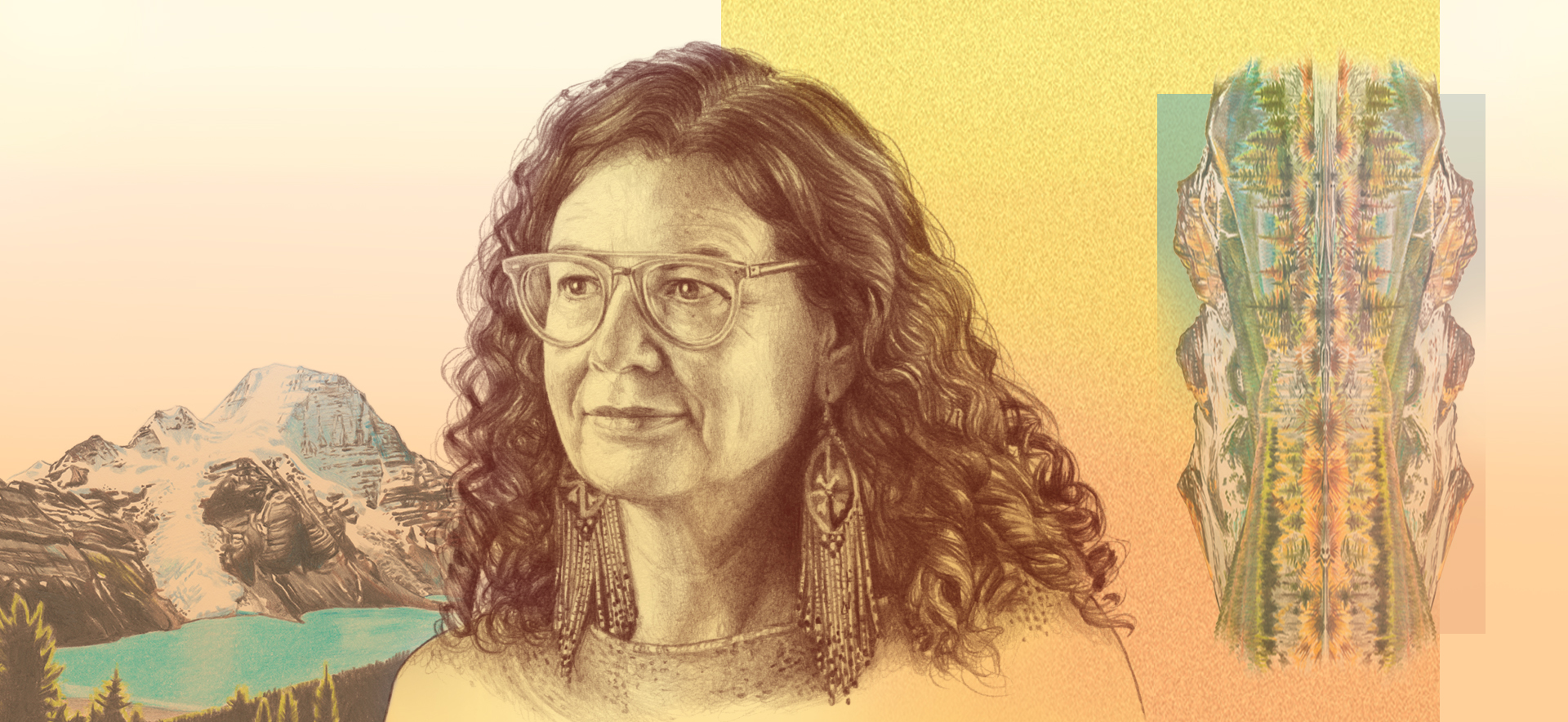
You may also like
Lorem ipsum dolor sit amet, consetetur sadipscing elitr, sed diam nonumy eirmod tempor invidunt.
Lorem ipsum dolor sit
- Interview
SCHIRN Questionnaire: Amna Elhassan
Brand new: Our HERE WE ARE collection
- Discourse
Bobbies on the Bathroom Beat
- Interview
About Time. With artist Helga Fanderl
Here we go Bockenheim!
- Video Art
Art meets AI: Twixt tool and being
- DiscourseInterview
The Meaning of ‘Artificial’ Life
- Sound
Here we go Bockenheim!
